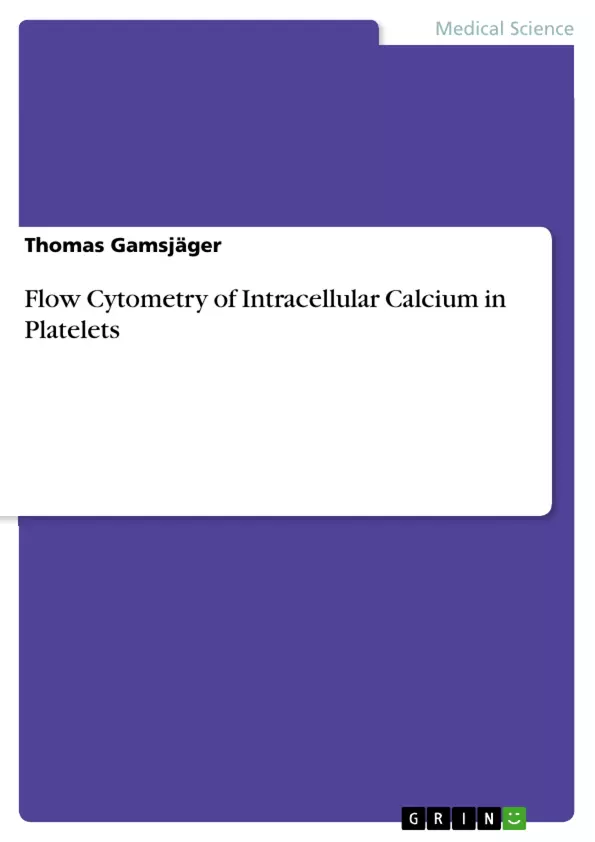During the last years flow cytometry has been developed into an important diagnostic tool with a wide range of applications. Whereas the differentiation of leukocytes is most often encountered, flow cytometry also renders itself especially useful in the study of platelets. Commonly, surface markers are of key interest, but the fact that platelets can be conveniently activated in vitro offers the opportunity to investigate intracellular signal transduction processes, which lead to the release of calcium into the cytosol. And it is this rise of intracellular calcium that flow cytometry is able to detect in real time through the use of suitable calcium-sensitive markers.
It is the aim of this book to put together an overview of this technique and therefore to provide a sound starting ground for its application to clinical and experimental investigations and also for its further development.
Inhaltsverzeichnis (Table of Contents)
- Introduction
- The Role of Calcium in Intracellular Signal Transduction
- Sources of Calcium
- Signal Transduction
- Flow Cytometry
- Principle
- Parameters
- Monoclonal Antibodies
- Isotype Control
- Compensation
- Monoclonal Antibodies Used for the Flow Cytometric Characterization of Platelets
- Intracellular Probes
- Presentation and Analysis of Data
- Regions and Gates
- The Use of Fluo-3 as Intracellular Calcium Indicator
- Conclusion
- References
- Abbreviations
- Index
Zielsetzung und Themenschwerpunkte (Objectives and Key Themes)
This work aims to provide a comprehensive overview of flow cytometry as a tool for studying intracellular calcium signaling in platelets. The text explores the role of calcium in platelet activation and signal transduction pathways, focusing on the application of flow cytometry for real-time monitoring of calcium dynamics within these cells.
- The importance of calcium in intracellular signal transduction of platelets.
- The role of flow cytometry in detecting calcium dynamics within platelets.
- The principles and applications of flow cytometry for platelet research.
- The use of specific intracellular probes for calcium measurement.
- The analysis of data generated from flow cytometry experiments.
Zusammenfassung der Kapitel (Chapter Summaries)
- Introduction: This chapter introduces the importance of flow cytometry in platelet research and its potential for studying intracellular calcium signaling. It emphasizes the unique ability of flow cytometry to detect calcium changes in real-time.
- The Role of Calcium in Intracellular Signal Transduction: This chapter discusses the critical role of calcium as a second messenger in platelet activation. It explores the sources of calcium within platelets, including the dense tubular system and the plasma membrane, and the mechanisms by which calcium is mobilized upon stimulation.
- Flow Cytometry: This chapter delves into the principles and applications of flow cytometry. It covers key parameters, such as monoclonal antibodies and intracellular probes, essential for platelet analysis. The chapter also details data presentation and analysis methods, including the use of dotplots, regions, and gates.
- The Use of Fluo-3 as Intracellular Calcium Indicator: This chapter focuses on the specific application of Fluo-3, a widely used intracellular calcium indicator, in flow cytometry. It explores the properties and advantages of Fluo-3 for monitoring calcium dynamics in platelets.
Schlüsselwörter (Keywords)
This work centers around the themes of flow cytometry, intracellular calcium signaling, platelet activation, signal transduction, and the use of specific probes like Fluo-3. It explores the application of this technology for studying the role of calcium in platelet function and for developing novel diagnostic and research tools.
- Quote paper
- Thomas Gamsjäger (Author), 2012, Flow Cytometry of Intracellular Calcium in Platelets, Munich, GRIN Verlag, https://www.hausarbeiten.de/document/190163


